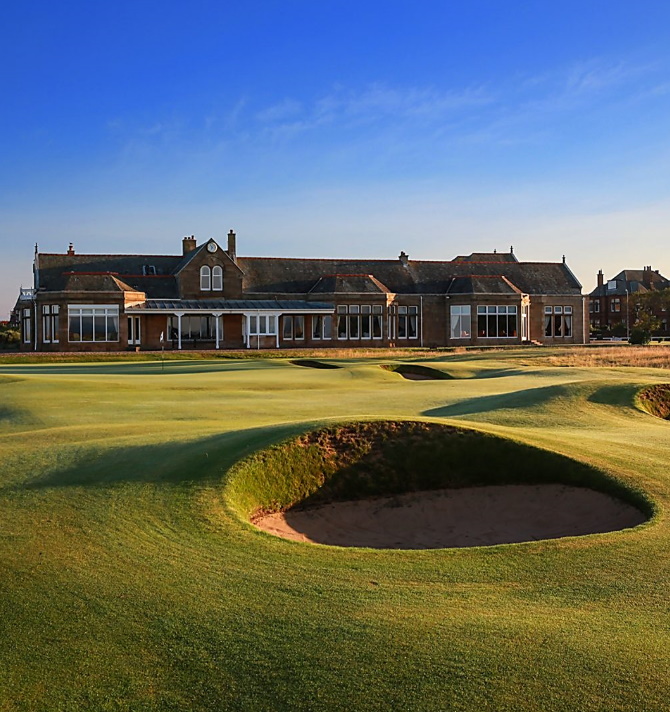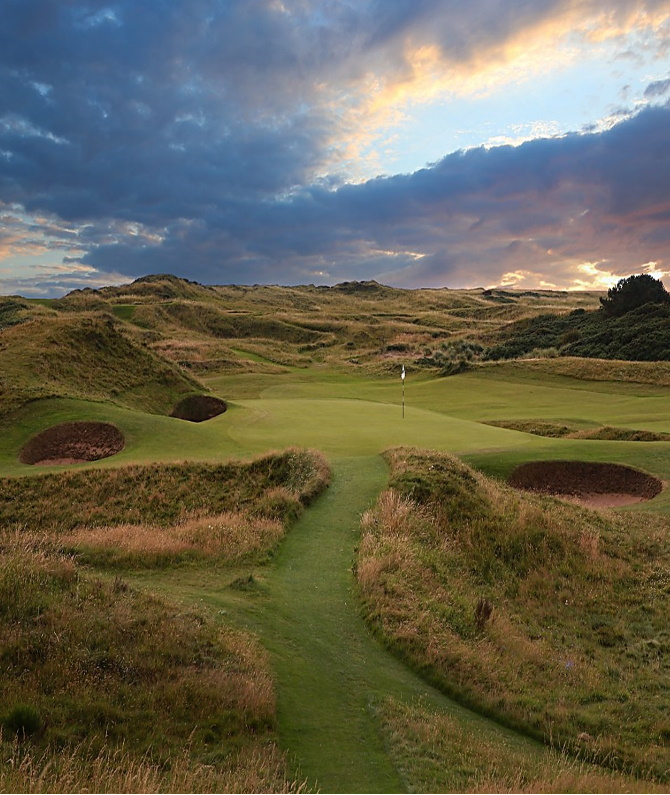
It took a 1909 article written in Golf Illustrated with more than hint of palpable protest about it rather than affection to work the trick. Willie Park Jnr described the eighth hole at Royal Troon as “A putting surface skimmed down to the size of a postage stamp”. It’s fair to say the name stuck. Protected by a phalanx of deep pot bunkers, two right, two left, and one centre front, this 123 yd, par 3 is all about the target. It measures just 9yds at it’s narrowest, and 14 yds at it’s widest (front bulge). In 1923 Gene Sarazen took a double and ultimately lost to Arthur Havers by one. The American legend had to wait until 1973 to take revenge, when at the venerable age of 71 he duly took a 5-iron to ace it.
The tenth begins a trio of holes around the turn that makes for one of the hardest in championship golf and is demonstrably more difficult than somewhere like Augusta’s Amen Corner. A difficult tee-shot often played into the prevailing wind, and semi-blind over a sand dune to a concealed fairway beyond. An errant shot is punished by gorse on the right and a large gully on the left. To reach this green in two shots you must hit a searching iron to a plateau green set into the side of a hill with a sharp drop on the right.
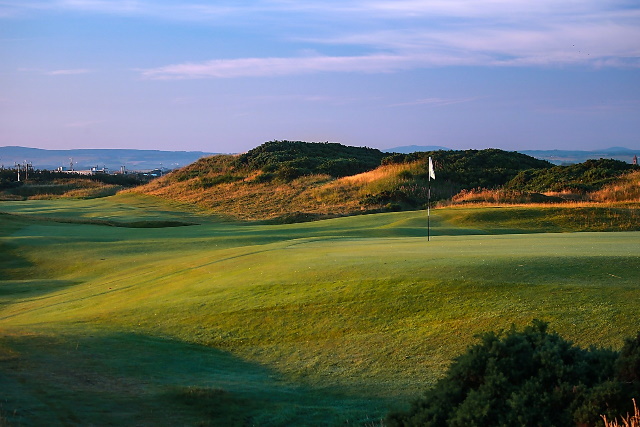

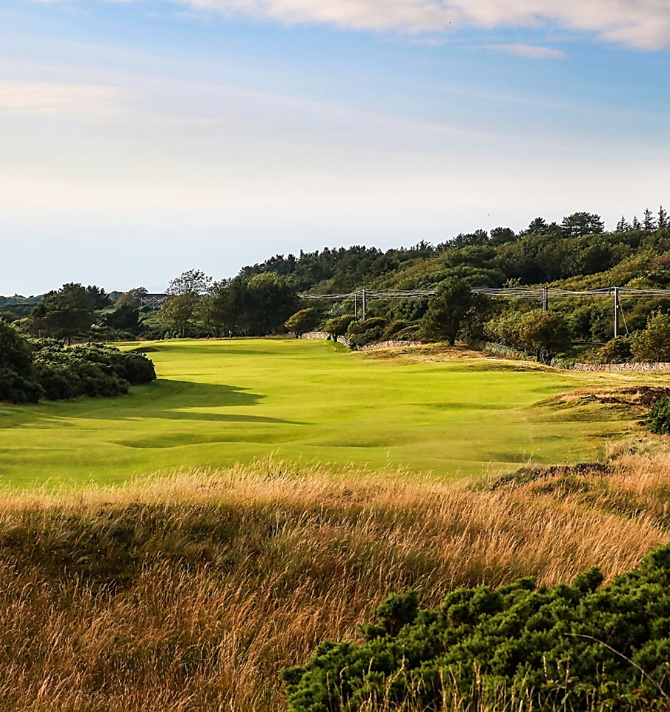
No hole on the Open championship rotation destroys like ‘the Railway’. A dog-leg right, the tee invites you to clear a sea of gorse to a distant fairway on a 45 degree angle. Too much club though and you’ll continue through the fairway into more gorse on the other side. Almost certainly a lost ball.
The approach is tight on on the ragged edge of reachable. An out-of-bounds railway line runs down your right, whilst the left side is guarded by bunkers. In 1962 Jack Nicklaus took a 10 here. In 1997 the British press reported “Tiger in the Jungle” as the newly crowned Masters Champion signed for a 7 on his first encounter. No hole taxes golfers for more triples or worse, and in 2016 some new illustrious names were added to the list of victims
Bubba Watson (7) Dustin Johnson (7) Danny Lee (7) Rickie Fowler (8) and Louis Oosthuizen (9)
The twelfth is a slight dog-leg with the drive played over a rise into the narrow neck of the fairway. The tee-shot should be played left of centre to avoid the ridge of rough, phalanx of gorse bushes on the right. The second shot is played to a slightly raised two-tiered green falling off down a bank to the left and guarded by a bunker on the right.
The twelfth was the key hole for Mark Calcavecchia in 1989 when he chipped in for a birdie when saving par would have been considered a good outcome.
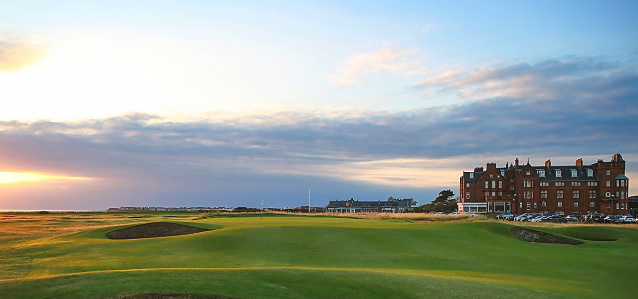
Par 3, 17th, with the Marine hotel right
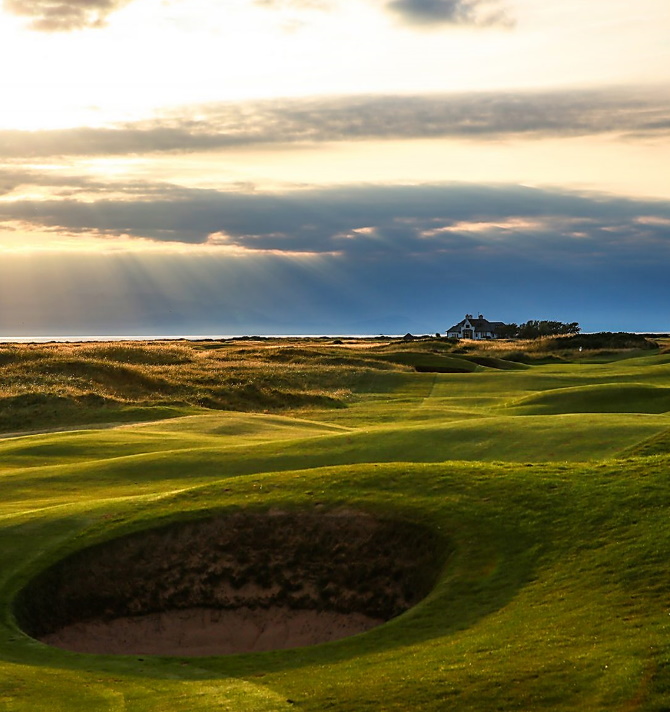
The longest par 4 on the links being just a yard short of 500, and played the second most difficult on the course in 2016. The drive is slightly blind to a plateau fairway and should favour the left half to open up the second shot to a flat green which rests in a hollow. This hole is well bunkered on the approach and the emphasis is on an accurate second shot. Only two mighty and truly hit shots will do.
In 2016 this was the hole where daylight first opened up between Stenson and Mickelson. Stenson had come to rest some 40 feet requiring a tricky putt across the width of the green to set up a par and to maintain his then one shot advantage. With the final roll of the ball the ball just tip toed over the threshold and dropped. For the first time, he held a two shot lead
The ideal drive at the eighteenth is straight down the centre to avoid the bunkers on either side of the fairway. Bunkers short of the green will catch a mishit second shot and the green itself, which lies right in front of the clubhouse, is protected by a bunker to the left and two more to the right. An overhit approach shot could finish on the path at the rear of the green, which is out of bounds.
The hole is best remembered for the collapse of Greg Norman in 1989, who having established the advantage in the play-off duly went to pieces by hitting a buinker no one thought was in range and finally sending his approach out-of-bounds
